京くみひも 京くみひも工業協同組合
KYO-KUMIHIMOKYO BRAIDED CORD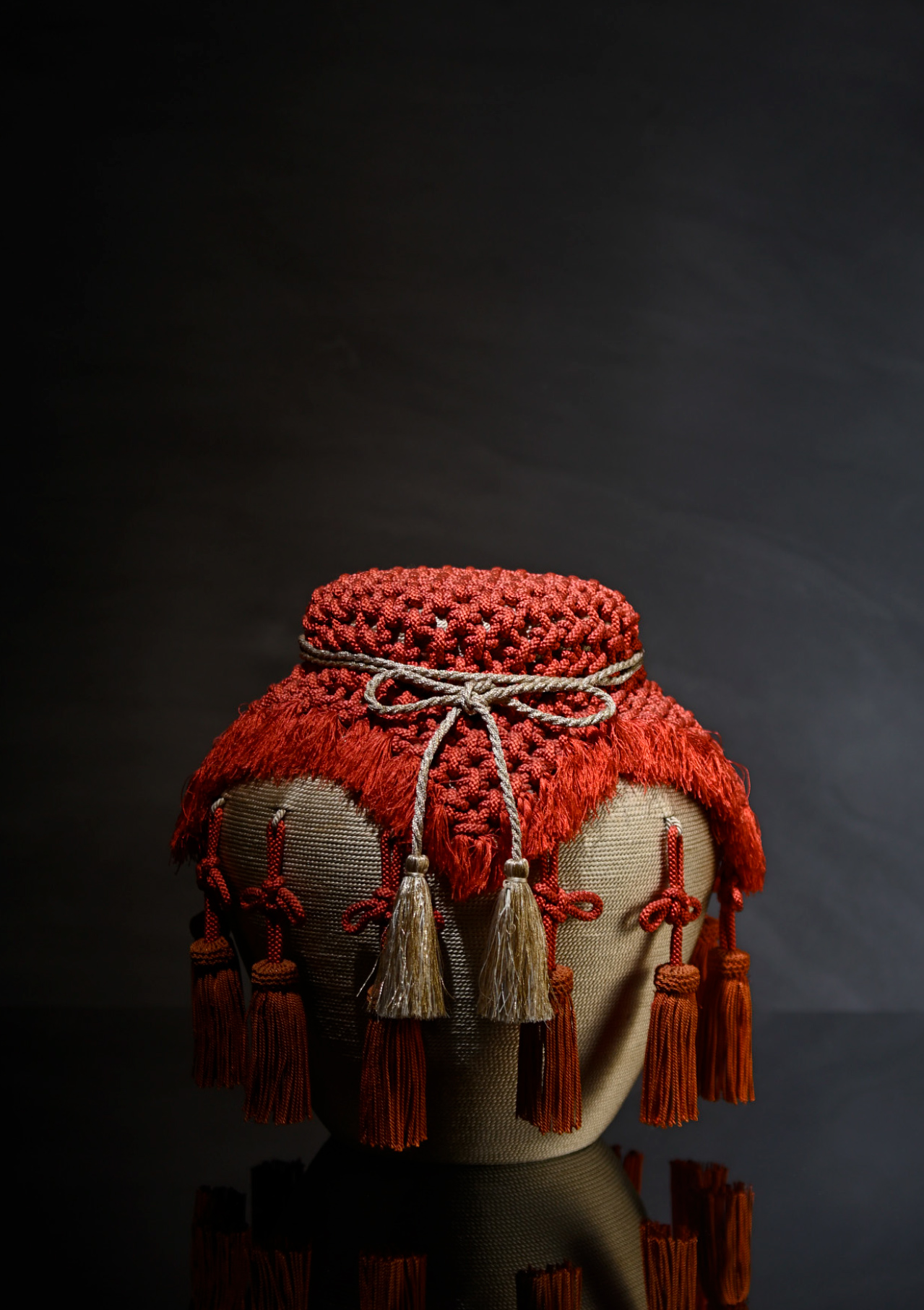 1
1
- 茶壺の飾りひも。春に摘んだ茶葉を壺に詰めて和紙で封印し、秋に初めて飲む「口切りの茶事」に用いられる。
京くみひもは、京都市とその南の宇治市周辺でつくられる、おもに絹の色糸を組み上げたひもを指します。奈良時代(8世紀)に中国大陸から技術がもたらされ、仏具や神具、皇族や貴族のための装飾品、茶道具、武士の装身具や武具、きものの帯締をはじめとする一般庶民の装身具へと、時代を反映しながら用途を広げてきました。くみひもを蝶や吉祥文様などの形に仕上げる「結び」も同時に発展し、空間装飾やお守りなどの装身具とされました。武家では、家ごとに結びの型が決められ、貴重な品を納めた箱に結ばれたひもは家人以外に再現できないため、防犯の役割も果たしたと考えられています。手作業で組まれる美しい組み目の種類は300種類にも及び、現在では、そのカラフルな美しさからアクセサリーやキーホルダー、そして耐久性の高さから、スニーカーのひもや腕時計のベルトとしても人気を集めています。
Kyo-kumihimo is a hand-braided cord composed primarily of colored silk thread which is made around the cities of Kyoto and Uji. Since the introduction of the technique from China in the Nara period (8th century), its application has changed to reflect the times: first for Buddhist altars and sacred items, then as ornaments for the Imperial family and aristocracy, tea utensils, samurai armor and ornamental accessories and finally as accessories for the urban population such as kimono and obi. The knot which finishes the kumihimo into the shape of a butterfly or some other auspicious pattern was developed at the same time and was used as decoration or as an amulet. Each samurai family had a distinctive knot, and since the string which ties valuable boxes cannot be reproduced by anyone other than family members, kumihimo also played a role in crime prevention. There are 300 different types of hand-braiding techniques. The cords are not only colorful with an elegant sheen, they are also highly durable, hence their popularity for sneaker laces and wristwatch belts. .
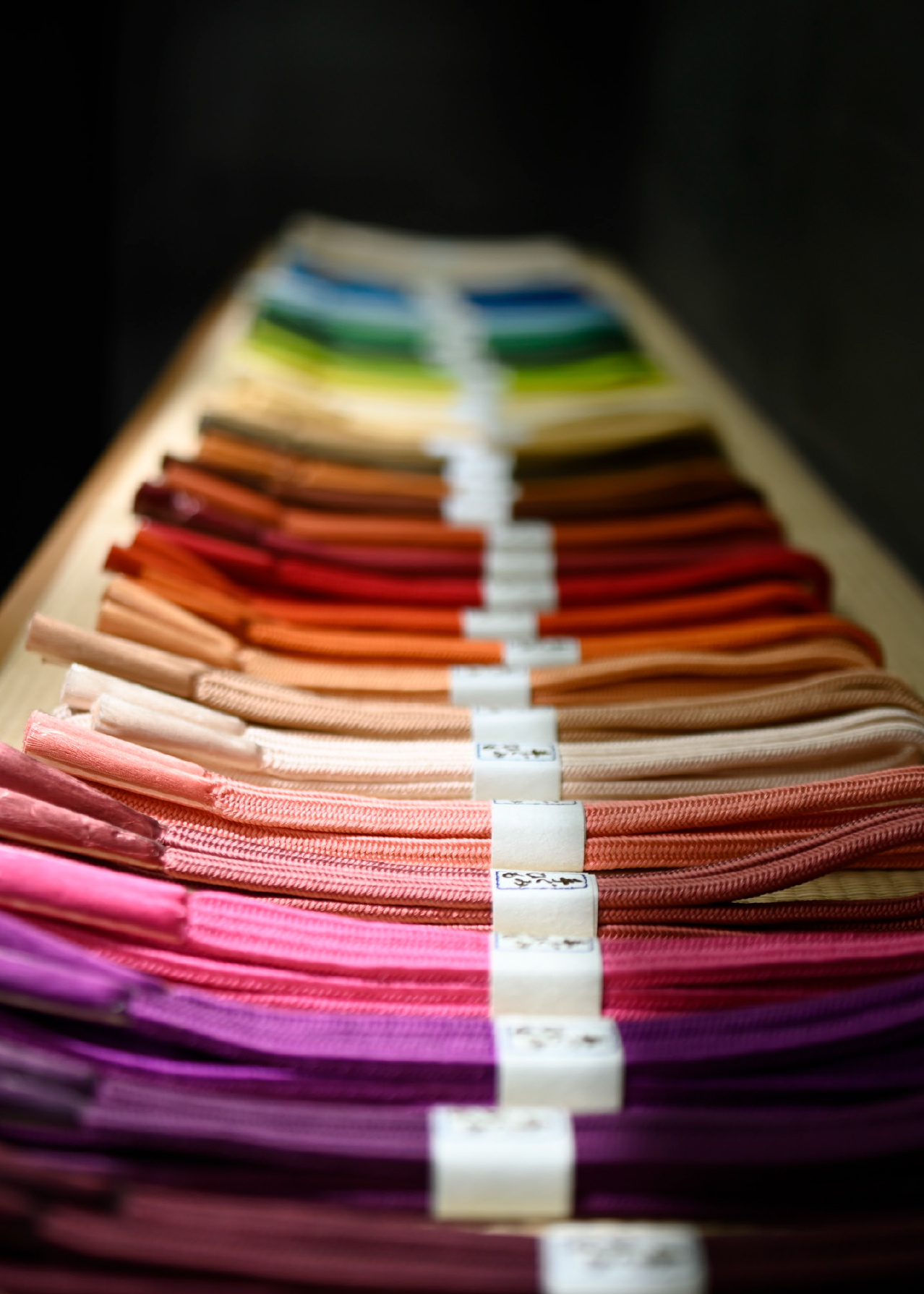 2
2
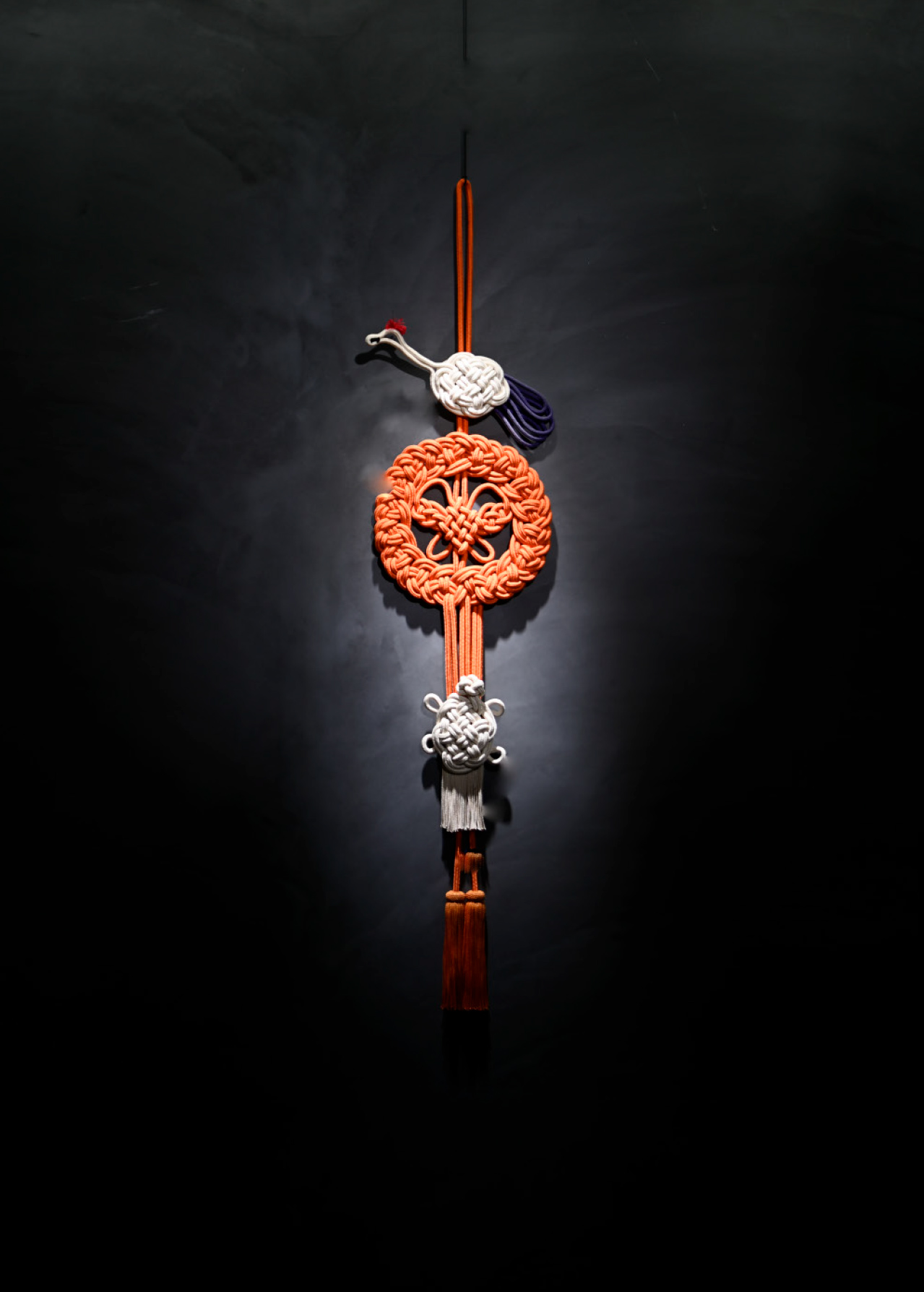 3
3
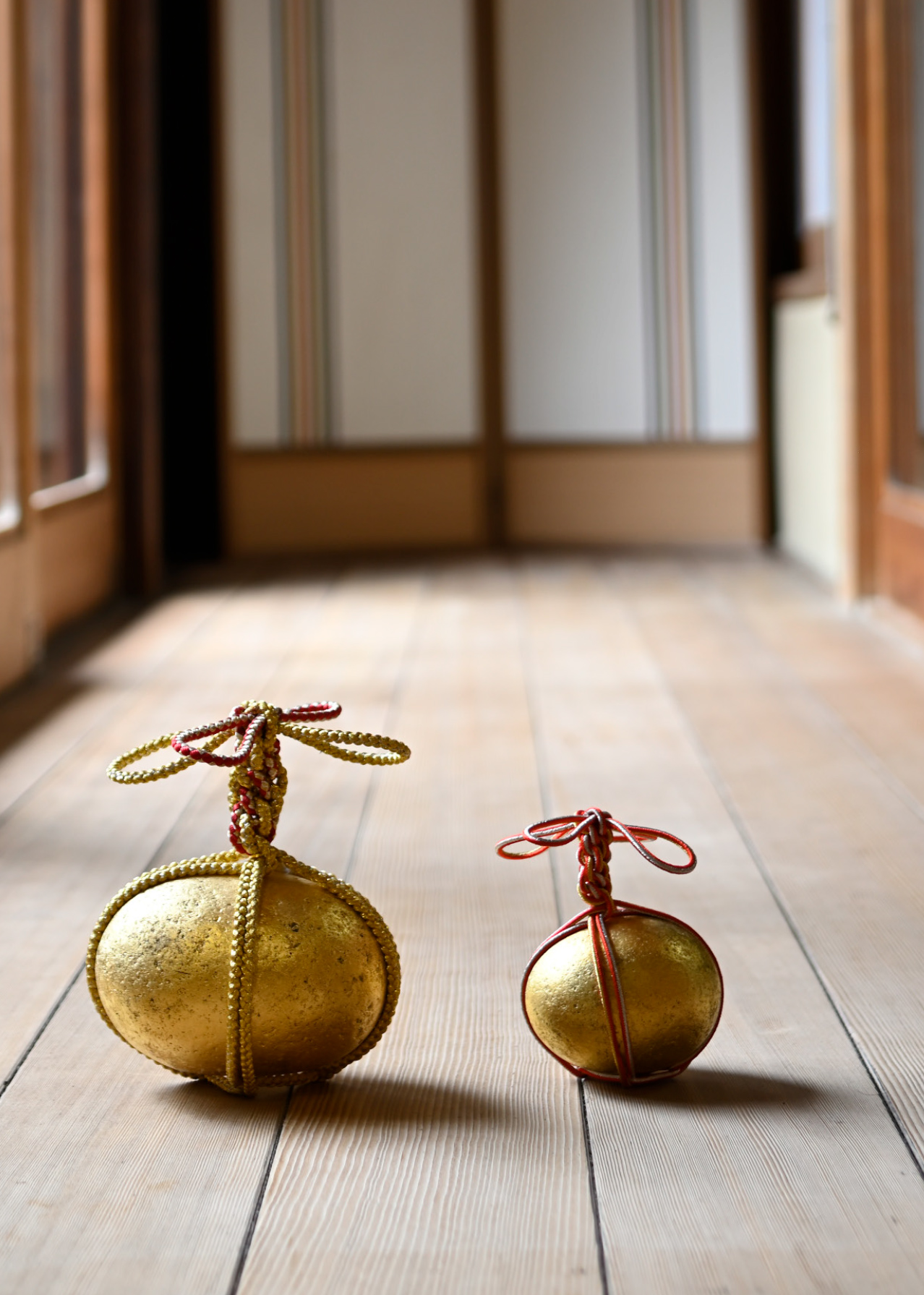 4
4
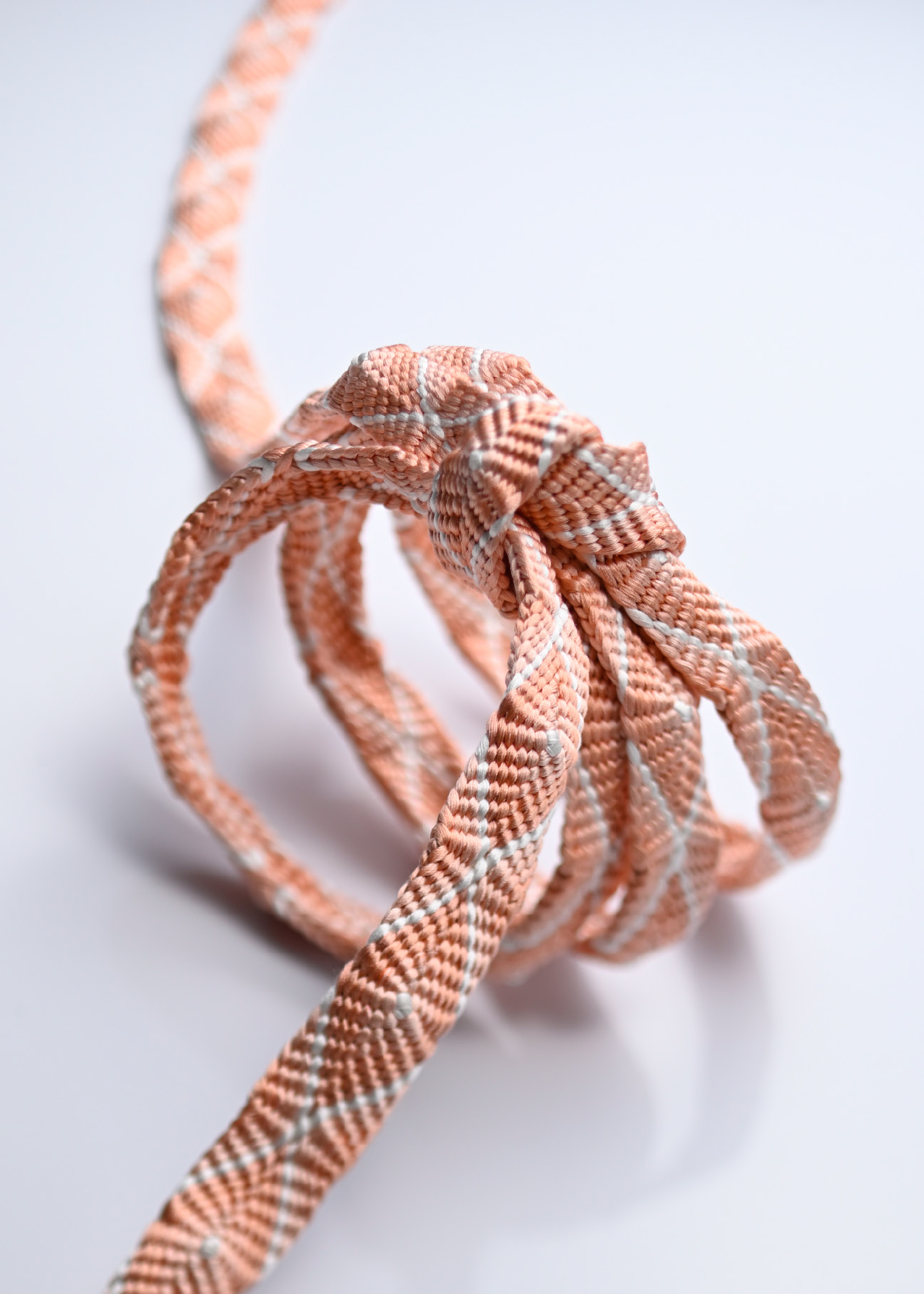 5
5
- :さまざまな色が揃う帯締。
- : 鶴と亀を組み合わせた吉祥飾り。
- : 石にひもを結んだものは関守石、止め石などと呼ばれ、その先の立ち入りをさり気なく禁ずる結界のサイン。
- : 手組による帯締めで「唐組」という組み方の紐。組み方により、色柄と地模様を複雑に組み合わせることができる。茶席などで使われる。
(1,2,3,4,5 すべて有限会社昇苑くみひも)
1: Decorative string for a teapot. It is used for Kuchikiri no Chaji, where tea leaves picked in the spring are packed in a jar, sealed with Japanese paper and drunk in autumn. 2: An obi belt with various colors. 3: An auspicious decoration that combines a crane and a turtle. 4: A string tied to a sekimori stone or "barrier" stone, which politely prohibits entry. 5: Karagumi string, an obi-tie tightened by hand. Depending on how they are assembled, patterns can be combined in a complex manner. (1,2,3,4,5 Showen Kumihimo)

